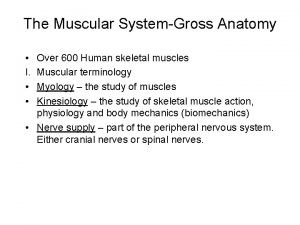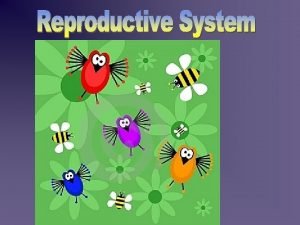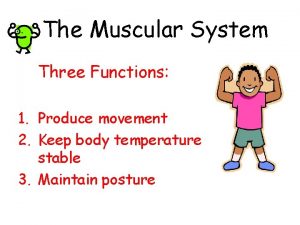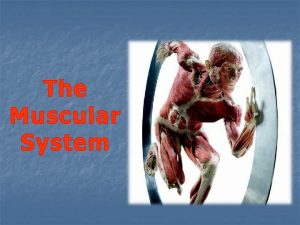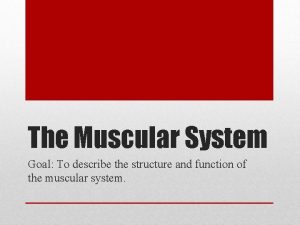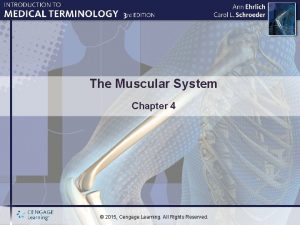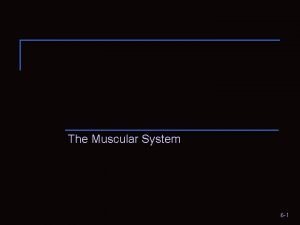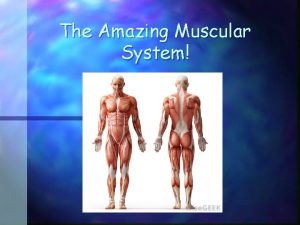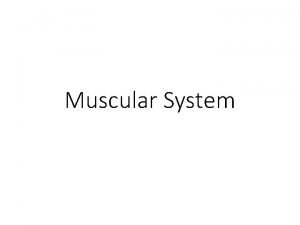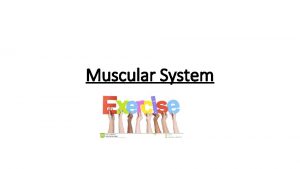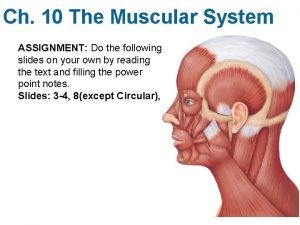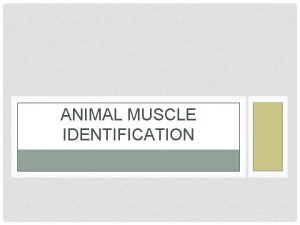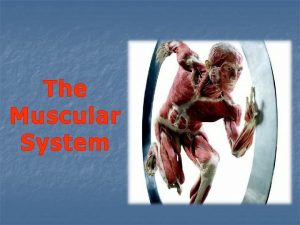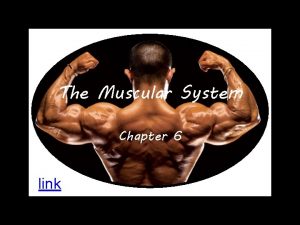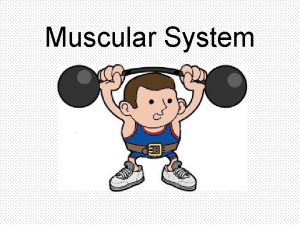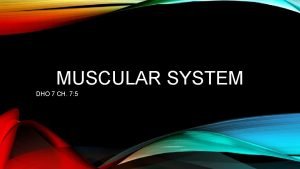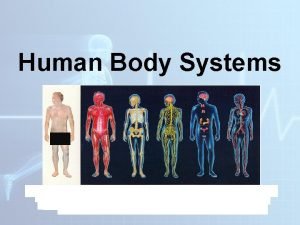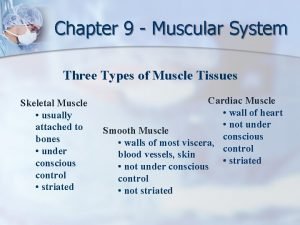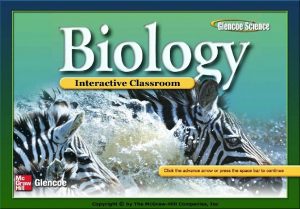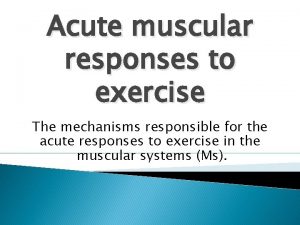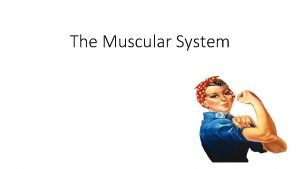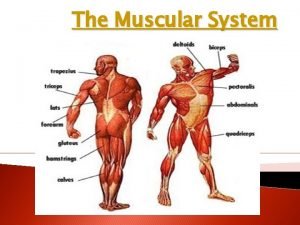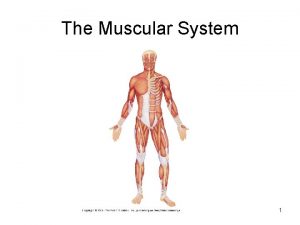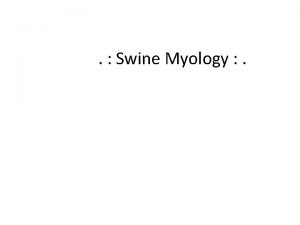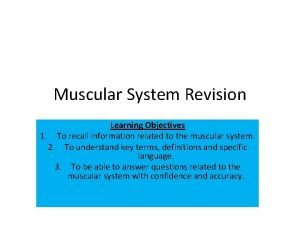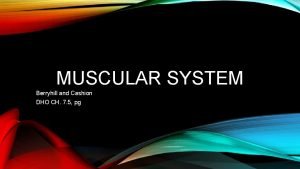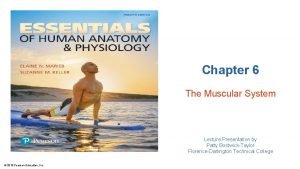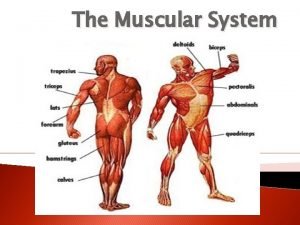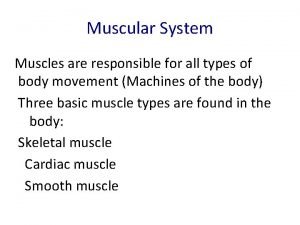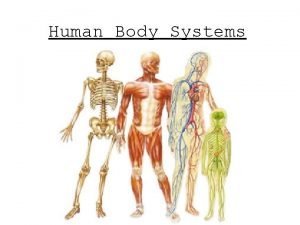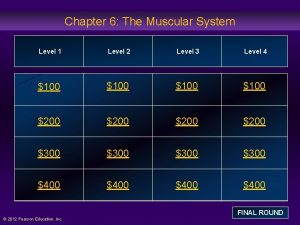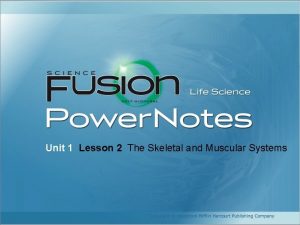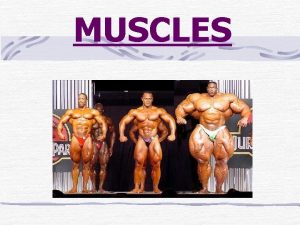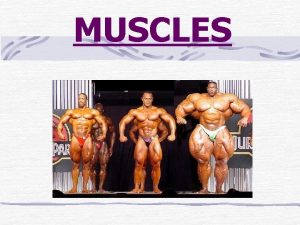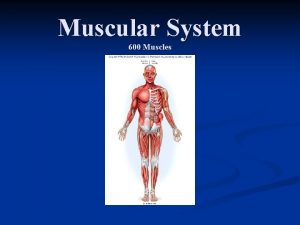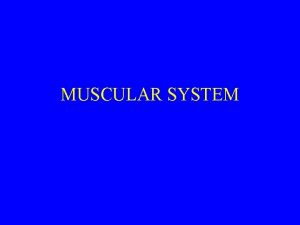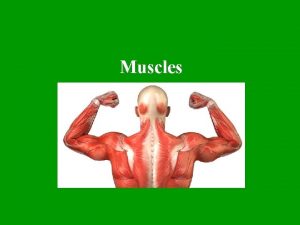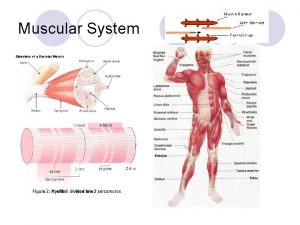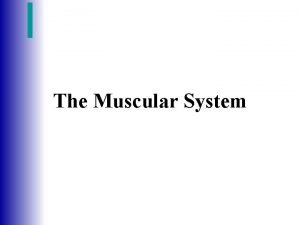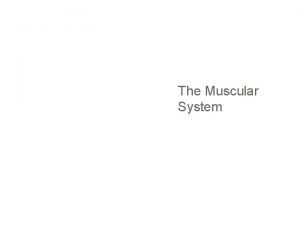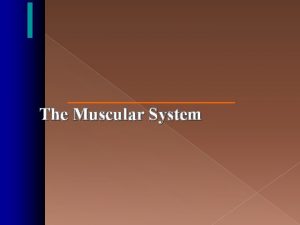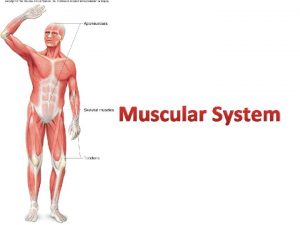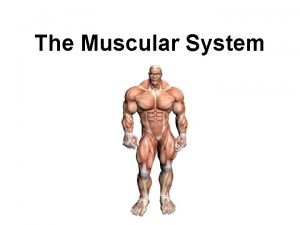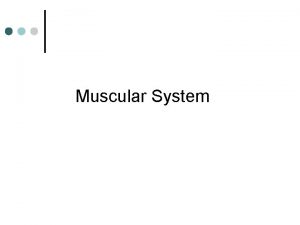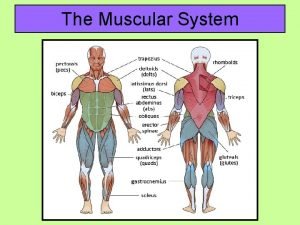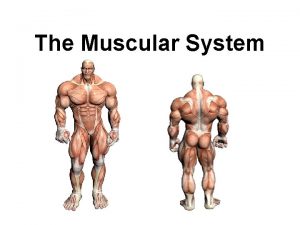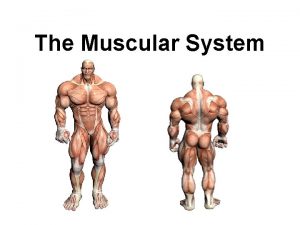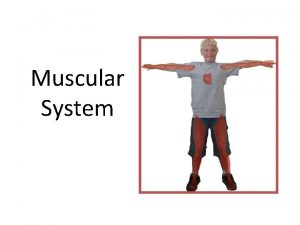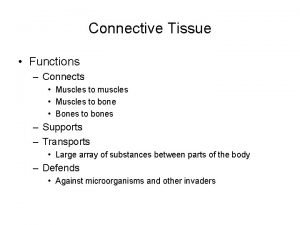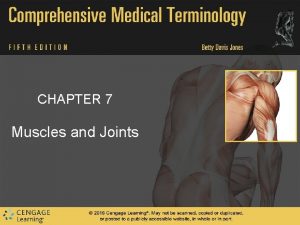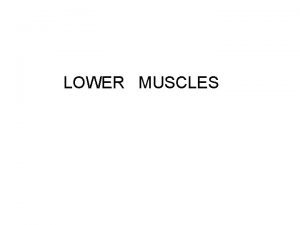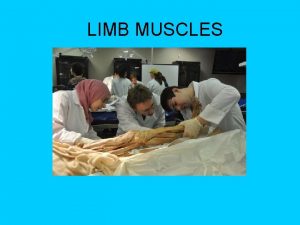Muscular System Muscular System Over 600 muscles 45

















































- Slides: 49

Muscular System

Muscular System • Over 600 muscles • 45% of body weight is muscles

Characteristics a. Excitability – respond to stimuli Usually the stimulus is electrical or chemical

Characteristics b. Contractility - shorten

Characteristics c. Extensibility – be stretched or extended

Characteristics d. Elasticity – recoil and resume length

Functions a. Provides movement

Functions b. Maintains posture

Functions c. Stabilizes joints

Functions d. Generates heat

3 main types of muscle tissue

a. Skeletal muscle – move your skeleton • Voluntary muscle – we consciously control them • Striated – has narrow bands • Each cell has many nuclei


b. Smooth muscle – found in internal organs • Involuntary muscle – don’t consciously control them • Not striated – no narrow bands • Each cell only has one nucleus


C. Cardiac Muscle – found only in the heart • Involuntary muscle • Striated and branched • Each cell has only one nucleus


35. Skeletal muscle anatomy A. Muscle – organ made of several tissues a. Surrounded by epimysium sheath

Skeletal muscle anatomy B. Fascicle – portion of the muscle a. Surrounded by perimysium sheath

Skeletal muscle anatomy C. Muscle fiber – single, multinucleated cell a. Surrounded by endomysium sheath

Cross section of muscle fibers

Muscle fibers

Muscle fibers b. Sarcolemma – cell membrane c. Sarcoplasm – muscle cytoplasm d. Nucleus - many

Muscle fibers e. Myoglobin – red pigment that stores oxygen f. Mitochondria – lots for energy g. Myofibrils – organelle made of bundles of myofilaments


Myofibrils a. Responsible for contraction b. 2 myofilaments • Actin – thin one • Myosin – thick one

Myofibril c. Sarcomeres – functional unit of contraction, area between 2 z-lines 10, 000 or more along each myofibril

Myofibril d. I-band – light region, actin only e. A-band – dark region, myosin only f. H-zone – center of A-band, both actin and myosin g. Z-line – dark zigzag line in center of I-band

Sliding Filament Theory a. Actin filaments slide past myosin b. Z lines get closer together c. Sarcomere shortens-neither actin or myosin get shorter. http: //www. youtube. com/results? search _query=sliding+filament+theory&aq=0

Movement A. Tendons – attach muscle to bone a. Tendons pull on bones and make them work like levers

Puppet on a String

Movement B. Contracting – shortening and fattening of muscle cells C. Relaxing – returning back to beginning length D. Muscles can only pull; they cannot push

Movement E. Most muscles work in pairs When one muscle contracts, the other relaxes

Movement F. Flexor – the muscle that bends a joint G. Extensor – the muscle that straightens a joint

Movement H. triggered by electrical impulses through nerve cells

Movement I. A sodium solution is released which causes the filaments to lock (contract) J. To unlock, calcium solution is released to relax the fibers as you propel forwards. Nerve cell attaches to the sarcomere of each muscle fiber

Muscle Size Who has more muscles?

Muscle Size A. The number of muscle fibers (cells) doesn’t change they just get larger because more myofibrils are added to the cells

B. Hypertrophy - increase in number and size of myofibrils

C. Atrophy - decrease in size due to lack of use If you don’t use it, it will shut down!

Muscle fibers and Exercise A. Two types of fibers: a. Slow-twitch - endurance b. Fast-twitch - explosive Those that want to build up fast-twitch or slow twitch fibers need to look at the exercise that will help them

Anaerobic Exercise a. Use fast-twitch fibers b. Requires brief, high energy expenditure • Weightlifting – high weight, low reps • Sprinting c. Depletes oxygen quickly d. Excess lactic acid, turn to glucose

e. Builds the big muscles

Aerobic Exercise a. Use slow-twitch fibers b. Prolonged and constant energy • Weightlifting – low weight, high reps • Long distance running, cycling c. Uses same oxygen that is received d. No lactic acid

e. Leans and tones the muscles

Body building D. a form of body modification involving intense muscle hypertrophy 1867 -1925 Eugen Sandow, the "Father of Modern Bodybuilding"

a. Testosterone – hormone that stimulates hypertrophy • Do girls have it? – Yes, boys produce 10 -20 times more than girls

b. Steroid - synthetic testosterone hormone to artificially build muscle

 Trigonometri
Trigonometri 600 muscles
600 muscles Fusiform muscle
Fusiform muscle Plyometrics disadvantages
Plyometrics disadvantages Over the mountains over the plains
Over the mountains over the plains Siach reciting the word over and over
Siach reciting the word over and over Explain how to handing over and taking over the watch
Explain how to handing over and taking over the watch 600-699 dewey decimal system
600-699 dewey decimal system Dewey decimal system 400-499
Dewey decimal system 400-499 Autonomic nervous system muscles
Autonomic nervous system muscles Leydig cells
Leydig cells What do muscles move
What do muscles move Primary functions of the muscular system
Primary functions of the muscular system 2 function of muscular system
2 function of muscular system Chapter 4 the muscular system labeling exercises
Chapter 4 the muscular system labeling exercises Unit 6:5 muscular system
Unit 6:5 muscular system Amazing facts about the muscular system
Amazing facts about the muscular system Root word myo
Root word myo Muscular system label
Muscular system label The muscular system chapter 6
The muscular system chapter 6 Muscular system head and neck
Muscular system head and neck Sheep muscular system
Sheep muscular system Navigating the body muscular system #3
Navigating the body muscular system #3 Whats the function of the muscular system
Whats the function of the muscular system Chapter 6 the muscular system figure 6-12
Chapter 6 the muscular system figure 6-12 Whats the muscular system
Whats the muscular system Test chapter 7:5 muscular system
Test chapter 7:5 muscular system Aerobic respiration exercise
Aerobic respiration exercise Structures of the muscular system
Structures of the muscular system Types of muscles
Types of muscles Chapter 32 section 3 the muscular system
Chapter 32 section 3 the muscular system Muscular system response to exercise
Muscular system response to exercise How your muscular system works
How your muscular system works Muscular system
Muscular system Chapter 6 the muscular system figure 6-9
Chapter 6 the muscular system figure 6-9 Muscular system levels of organization
Muscular system levels of organization Superficial muscular system
Superficial muscular system Pig muscles labeled
Pig muscles labeled Muscular system learning objectives
Muscular system learning objectives Chapter 7:5 muscular system
Chapter 7:5 muscular system Chapter 6 the muscular system
Chapter 6 the muscular system Matching muscle directions and positions
Matching muscle directions and positions Muscular syst
Muscular syst I band h zone
I band h zone 3 function of the muscular system
3 function of the muscular system Muscular system
Muscular system Chapter 6 the muscular system
Chapter 6 the muscular system Chapter 6 the muscular system
Chapter 6 the muscular system Chapter 10 the muscular system
Chapter 10 the muscular system Lesson outline lesson 2 the muscular system answer key
Lesson outline lesson 2 the muscular system answer key


